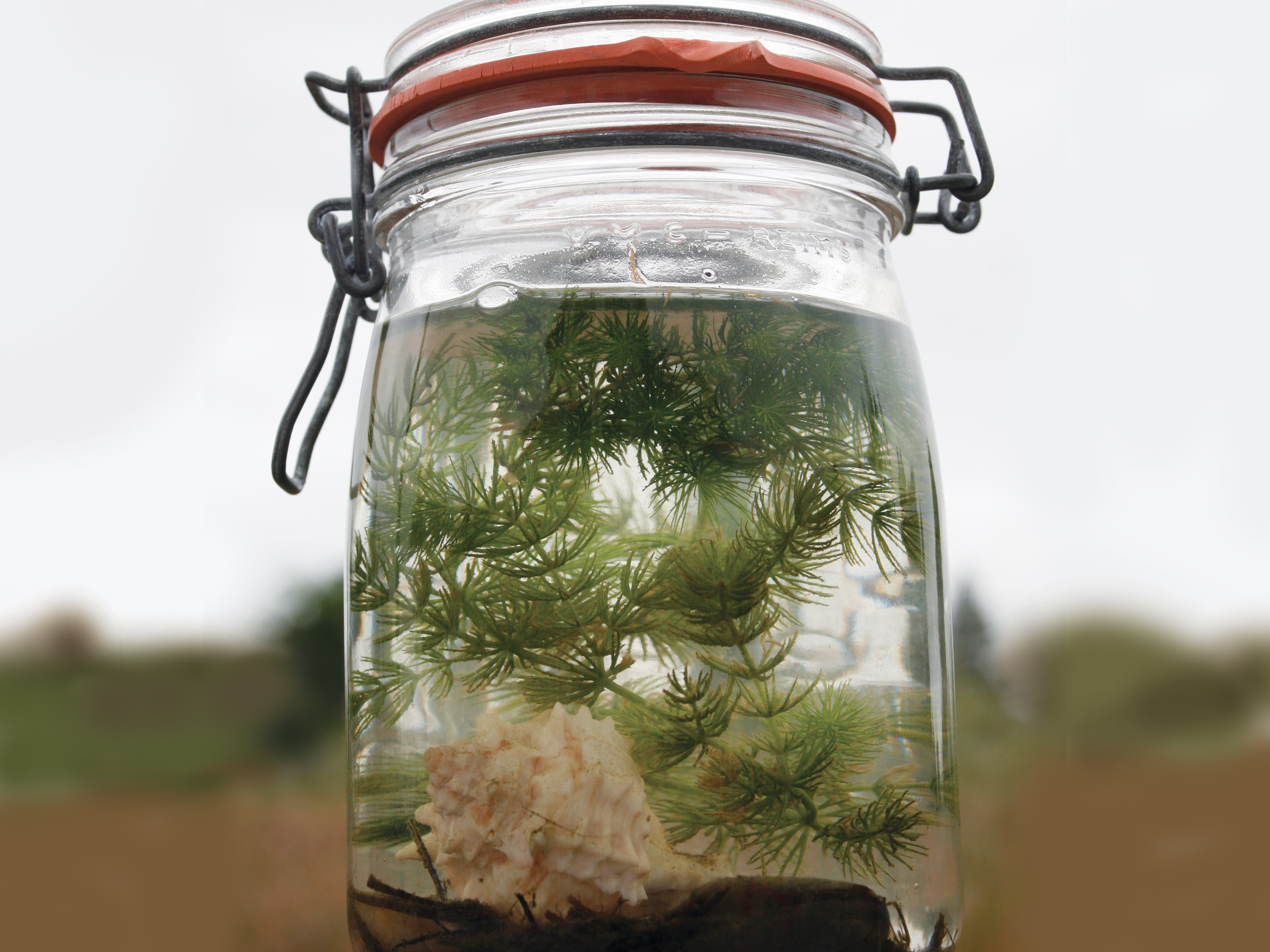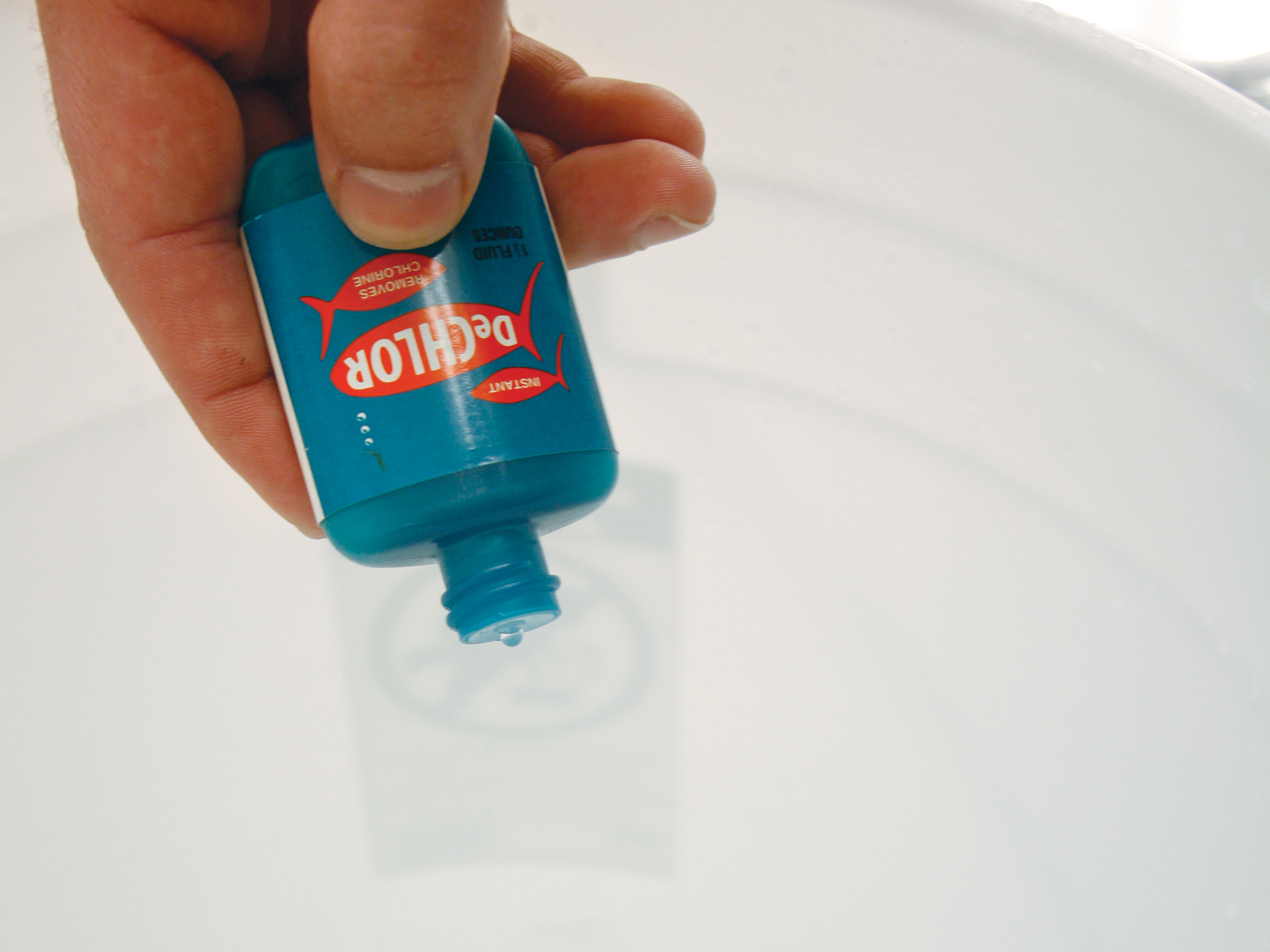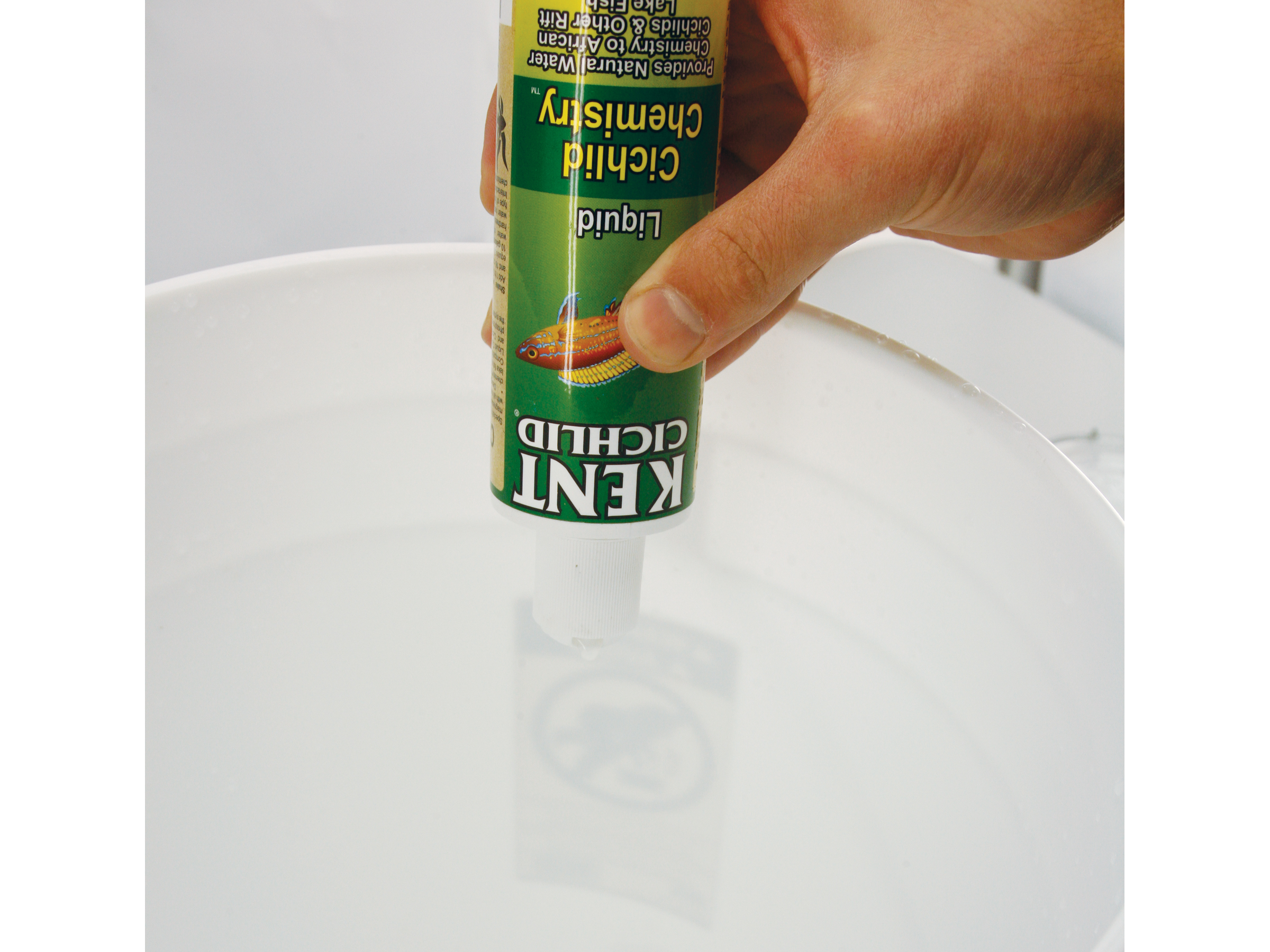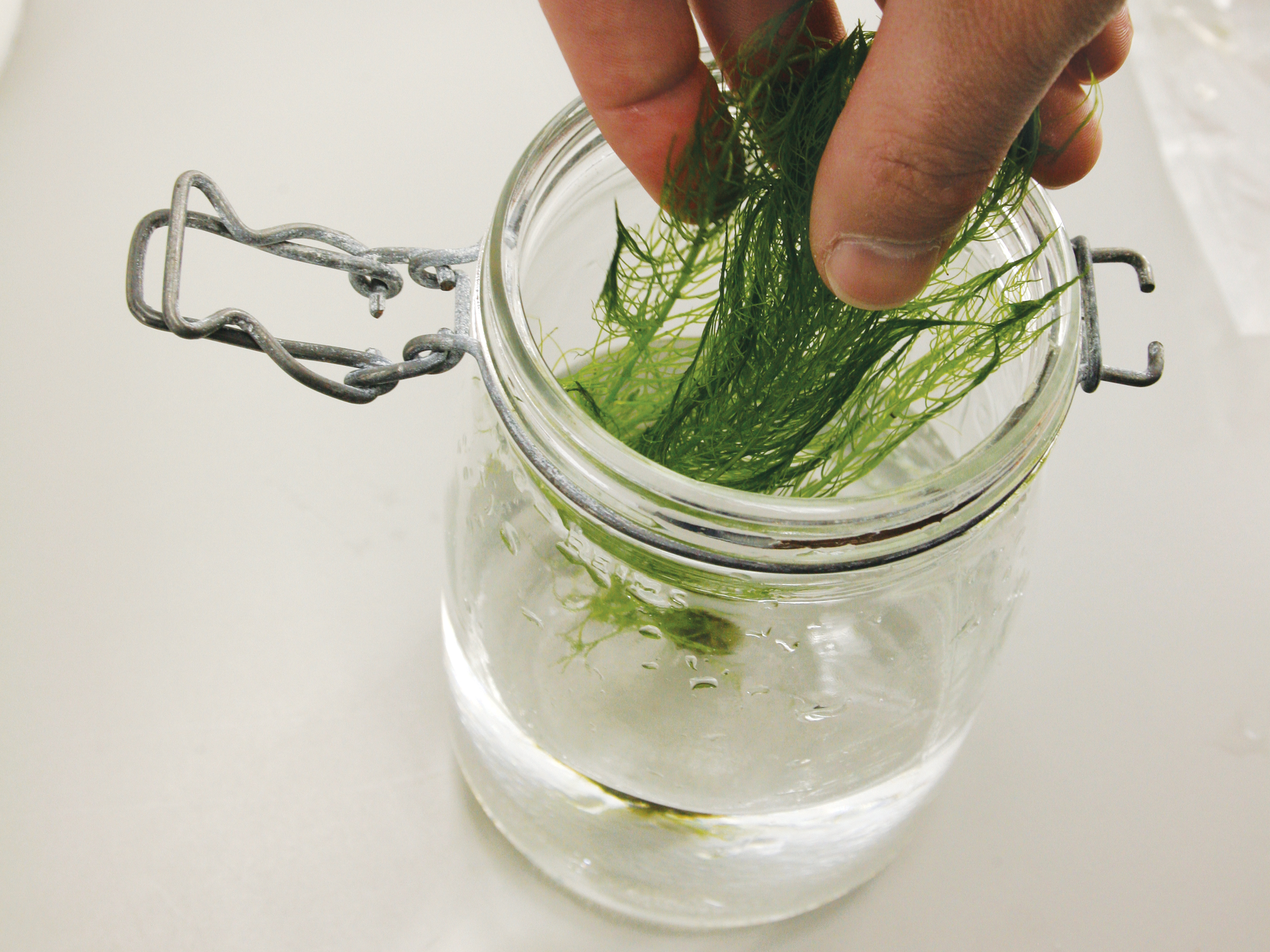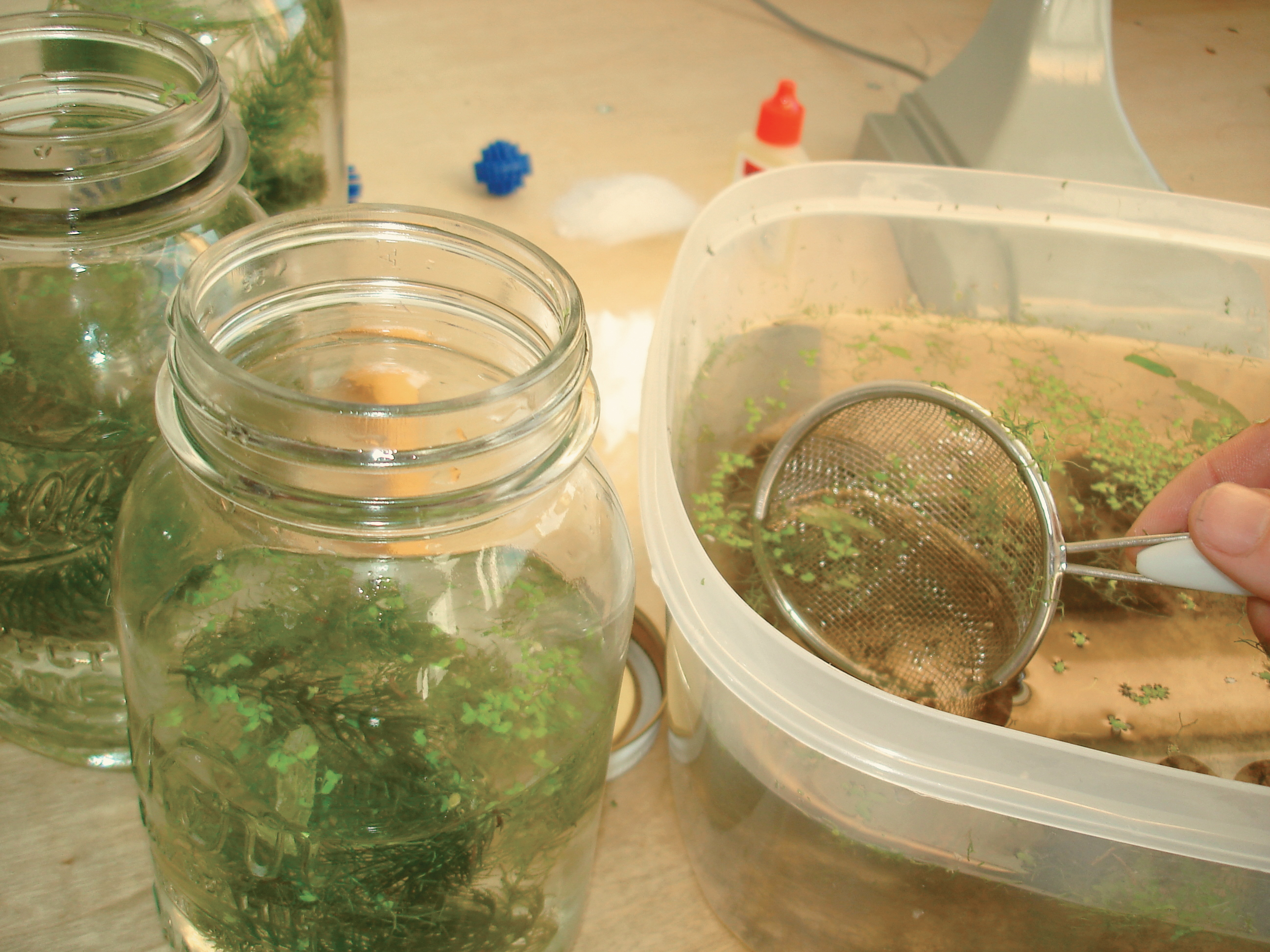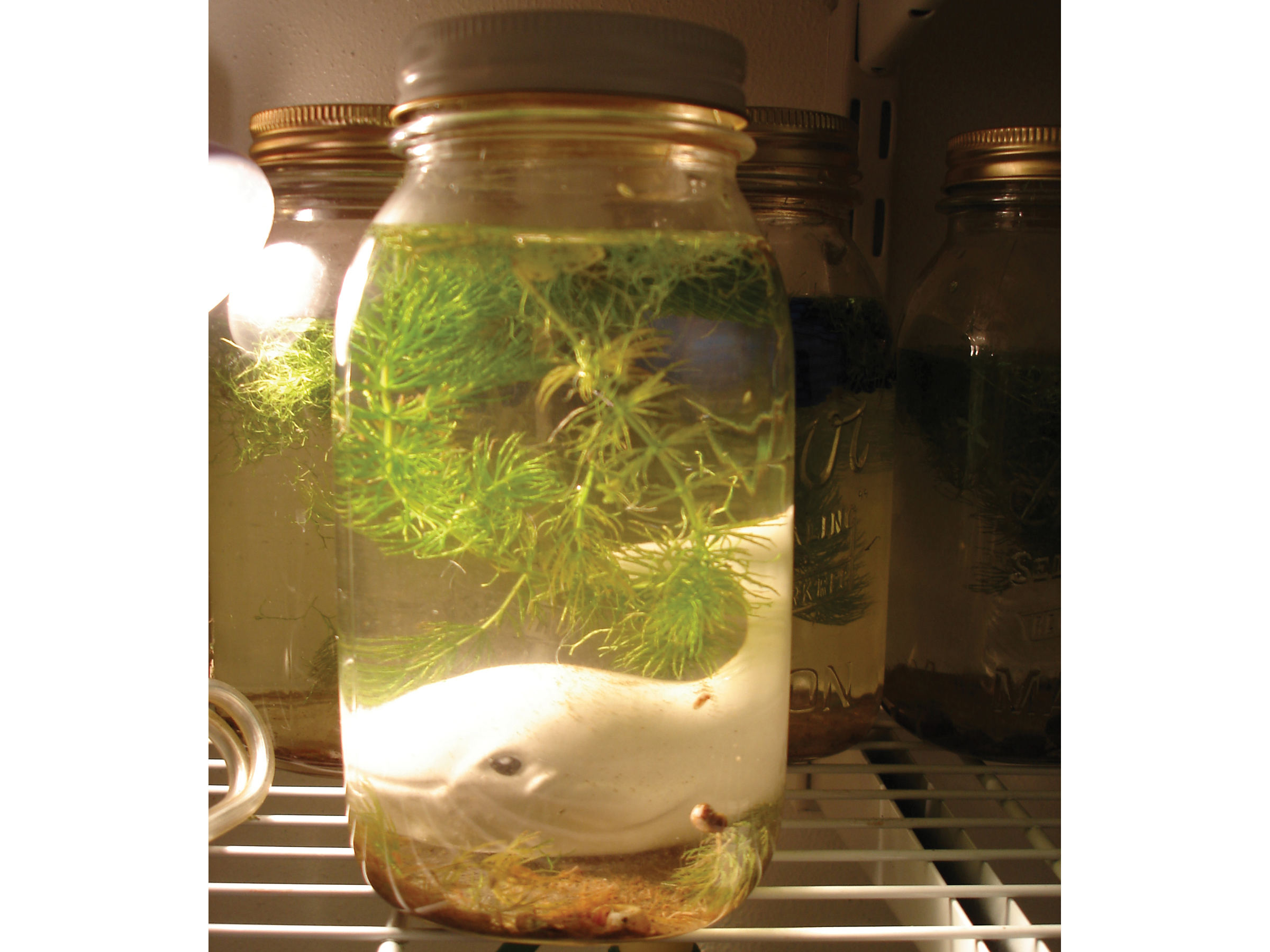When my 7th grade vocational aptitude test came back stamped “Forester” instead of “Astronaut,” I knew the testmakers had screwed up. Sure, I liked sitting in streams and peering down those creepy holes by the roots of old trees. But I also knew that someday the whole frackin’ park would be flying through space. Hadn’t anyone else seen Battlestar Galactica?
Now we know that space colonists are just as likely to be muddy ecologists as hotshot flyboys, the kind of people who assemble ecosystems instead of engines. Today’s pack-it-in, pack-it-out life support is impractical for long manned missions, but in the future, regenerative systems could provide years’ worth of food, air, and water while processing human waste. It’s recycling and reuse on a radical scale, light years beyond anything pitched by those hairy guys down at the co-op.
Here’s a mini version of this dream, a sealed system biosphere that supplies a freshwater shrimp “econaut” with food, oxygen, and waste-processing for a desktop journey of 3 months or more, aka the Tabletop Shrimp Support Module (TSSM).


